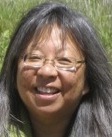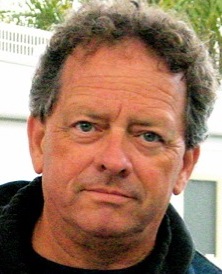The Windhook Interview—Nick Wilkinson

Last Sunday we left you with a bit of a teaser for this week when we promised to introduce you to someone who really knows about succulents. Well, we weren't kidding - prepare to meet Nick Wilkinson. Before the interview we knew Nick only slightly having first heard of him through artist friend Peg Grady (see our very first interview). When I first suggested to Michael that we interview Nick, he asked me, well what does Nick do? To be honest I wasn't really sure and I really only knew that he owns one of my favorite places in Cambria (or anywhere for that matter), Grow Nursery. Somewhere I heard that he was a painter as well. Nick and his wife, Kara Suzuki who is a graphic artist, live in Los Osos with their two young sons. Turns out that's only the tip of the iceberg. Read on and you'll see what we mean.
Michael: Nick, tell us about where you came from. Nick: Well I grew up east of San Diego County out in the desert out in Imperial County and I grew up the son and the grandson of a farmer. My grandpa, my mother's dad is a cowboy in the Cowboy Hall of Fame, a rancher. My other grandfather was not a farmer but he dealt produce, and my dad was a farmer forever, so I grew up very much with farming. Peggy: What did your dad grow? Nick: Well out there it's the desert for sure, so it's like the desert turned into farms, which I guess is true of much of the inner part of the state, but this is real 120 degree desert. Their growing season is the winter, mostly, but they grew a lot of alfalfa, a lot of melons, my dad grew a lot of crop for seed, mostly onions for seeds. He also had laser land leveling where he used tractors and they set up lasers to get it all flat so that when you run irrigation it's totally level. So I grew up there 'til I was about 15 and then my parents divorced awhile before that but my mom moved to Oregon and I moved when my brothers and my Mom moved to Oregon where I graduated from high school. That's sort of where I had my first art class was at high school in Oregon and I never had really been interested in that before. I mean I guess I was interested in it but I'd never really made art before that and I had a really fabulous teacher in high school. Peggy: So it was a general art class? Nick: It was just a general art class and it wasn't even my intention to take the art class it just fit a schedule which was really fabulous. And I found that I could draw some things and I decided that's what I wanted to do forever. Michael: Did you go to college first? Nick: I went to school at community college in central Oregon and I went to the over to the Coast by Oregon state and I went to a community college. I did some time at the community college. You know, it was such a different place than growing up in the desert and its like the opposite of growing up in the desert and central Oregon is beautiful and sunny with four seasons. In the summer it was hot and in the winter it snowed, and in the spring the flowers would came up but in western Oregon is was sort of rainy all the time, and it sucked basically. I mean it was beautiful, it just wasn't for me. And at the time my parents were getting ready to sell what they had going there and my stepdad had some property in Cambria where they now have the hotel. It was a different hotel. So they were planning on moving here so I moved to San Diego and that's where I went to school and I got my degree in Art at San Diego State University in painting and in printmaking. That was what my degree was in, but really by the time I got out of there I really wasn't making any paintings or prints, I was doing some photography, and mostly sort of installation art. Peggy: What hotel? 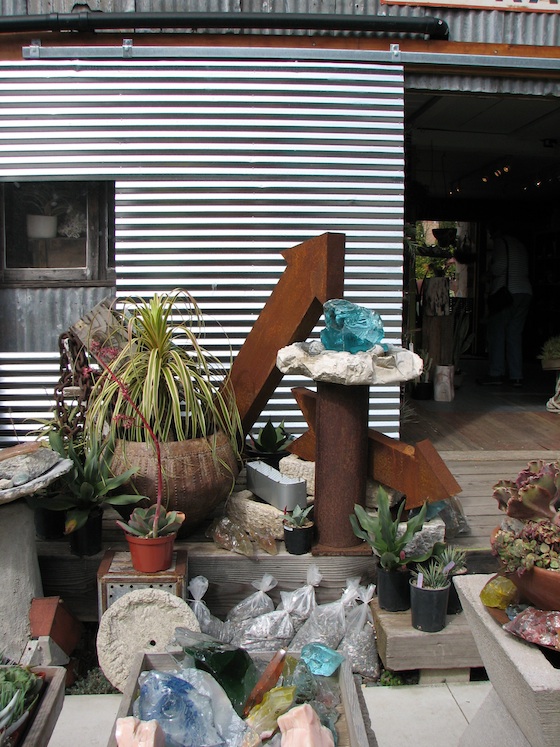 Nick: Right now they own the Cambria Shores Inn which is where all the succulents are in the front. Before that he had some partners in a few other hotels. I forget, but you know I wasn't really a part of any of that so I never really paid attention. But, basically he had a few other properties and he was also part owner of the historic hotel in Paso Robles, the old one. Peggy: The Paso Robles Inn? Nick: Right. He sold out of all those and they bought the Cambria Shores Inn which was his Aunt's property from the 60's back when it was just a straight motor lodge. And then she sold it to some other folks and then he bought it back. He wanted to get it back again. So that's what my parents have been doing for the past ten years. Michael: You are in your 30s or so? Nick: Yeah, I just had my 34th birthday. Michael: So you've pretty much been around here since you got out of art school. Nick: Yeah I graduated and at the time when I was going to school I worked for this restaurant company called the Brigantine which was a corporation and they have like ten or twelve restaurants in San Diego County. But it was sort of all home spun, like the owner came in the restaurants, so it was a loose thing. Peggy: What did you do? Nick: When I moved to San Diego I took a semester off, which scared the hell out of my parents because they sort of thought I'd never go back. But I was determined to get down there and get on my feet and I wanted to be able to work, and you can't go in and try to get a job if you say you don't have the time, but I wanted to be totally free to work. So I started bussing tables there and by the time I graduated from college I was basically within the management program. Also right after college my friends started a magazine called ReUp Magazine which I didn't have a lot to do with but they had a downtown space that they opened up as a gallery. I helped sort of curate that space and we put together shows, mostly artists from out of town but there were some locals. I showed some of my work, and showed a buddy from Los Angeles, and that went for a year and a half or so and that was fun and I really enjoyed it. But what I didn't really enjoy was that at the time I was about to get married to my wife and we worked totally separate gigs. She was a graphic designer all day and I was in the restaurant business. I'd go in at 4:00 in the evening and work until 1:00 at night. Not always that late but it was not conducive. It could have worked but I got to a point where it's like, "Am I going to buy the same group of people drinks at the bar every night? or am I going to comp overcooked prime rib for the rest of my life?" Not that that's a bad thing but it was getting in the way of me being able to make things and to be happy. I was silly enough to think that I could get out of that and live a creative life. You know. Peggy: Good for you! 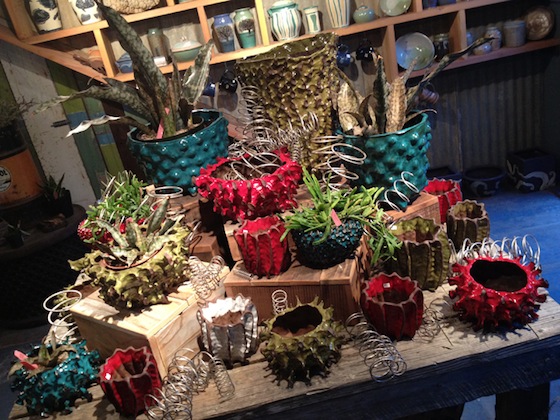
Nick: I also at the time was collecting a lot of succulents and I had this huge collection of vintage pottery from basically like the 30s or 40s 'til the 70s. Nothing of great value but just like fun Bauer pots. So we had about 200 plants all over my backyard and it was something that I really loved. I think I was drawn to the succulents mainly because they had so many cool shapes and they were sculptural. We would come up here to visit and my brothers were really into succulents too, so when I would come up here we would go look at a lot of nurseries. The short of it is I'd talk to the gal that had been running this little nursery up at Moonstone Gardens, Ann. She lives here in town and I talked her into selling it to me. Peggy: I didn't realize she was there before you were, I remember when you were up there. Nick: So I bought that place and it took awhile. I knew a lot about succulents but I wasn't an expert by any stretch and so it was sort of training on the job. I did have a mentor down in San Diego, Michael Buckner, they call him the "Plant Man" he has a nursery down there. And he helped me a lot with getting sources and just learning about things but a lot of it is just, you pick up a book and you learn it, I mean just teach yourself. Peggy: So did you have to leave all that stuff down there? Nick: No I brought them all up. Many of them still reside at my Mom's place. When I moved up the first three loads were just plants. So if I knew what I know now, I would have probably just left them or just sold them off because I'm swimming in plants. And the things you held as important aren't as much. Peggy: And the pottery, you moved all that too? Nick: Yeah, I still have some of it but we have kind of a modern house here in town and my wife is half Japanese and so everything has to have its place you know. Peggy: And that's not me. I didn't get that gene. Nick: Her father is very much like that. She is very very much like that. Peggy: Did you meet in school? 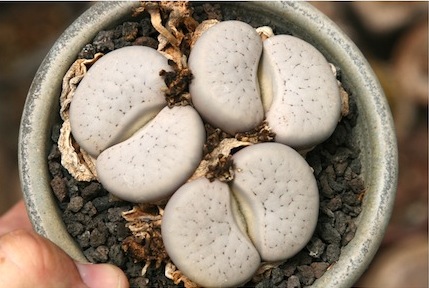
Nick: We met at the restaurant. But she was a few year's older than me and she was like getting into her professional life when I was just still going to school. So we really didn't connect during that time. It wasn't 'til later. Peggy: And she does freelance now? Nick: Yes, she does freelance work. Peggy: But when you met her she was working for a firm? Nick: A design firm. There in Old Town in San Diego which is where the restaurant where I worked at the time was. San Diego was great and it took a little while when I moved here to sort of hit the breaks you know, 'cause I had a lot going on. I used to DJ at night, played records at restaurants and clubs. Life was happening - I was 25 years old and to come up here and realize that you can't go to dinner after 7:30. You better have a plan otherwise you don't eat. Peggy: Yes, that's true we got stuck I think the first year when we were in Cambria. It's like there's nothing open and somebody told us the Cavalier in San Simeon, and so we drove all the way up there and it had just closed. There was nothing open. We learned that. Michael: It is a little quieter. Nick: Yeah it's sleepy. But now I cherish that of course. Now that's everything, but when you are comin' out from the city... Michael: Well it's good until you've worked all day and you haven't stopped to think and now suddenly you're hungry and tired and you just want to go get something and you can't. Nick: Yeah, that is the problem. Yeah, living in Los Osos is sort of a culinary desert here and so there's a few spots. We always like to go to Noi's but it is different when you are in San Diego. We could walk to 50 different restaurants. It's a different game here but not that big a deal, as you can see [gesturing to his mid-section] I found something to eat. Michael: So let's talk a little bit about what you do now.  Nick: Basically, I own Grow and that's how I make a living. You know, when we were up at the Hamlet we were a one man show. We were able to make a living but it was a modest living and it was just me. I mean we had Richard Rowe the potter from Morro Bay and he would help me one or two days a week so I could go buy plants. But basically it was a one man show. Then that property came up for sale and we ended up at our new spot now. We had been looking for a new spot for quite some time but it's just hard to find retail space that has outside space for plants. So we found this space and it's great and everything is better about it. Because it was so busy in the summer I had to hire some people. Jan Moon who was helping me at the time. Do you know Jan Moon? Peggy: No. Nick: Jan Moon ironically used to own the nursery up at the Hamlet at least 25 years ago and so I talked here into coming back. She's a gardener in town and she was hoping to get out of that but basically she helped me all through the summer and as we approached winter it's back to sort of being a one man gig with the exception of a few days. But to commit to an employee I really had to commit to Jan because she wasn't going to give up her whole gig to work with me. I mean she had to sort of give up her gig to work with me. So basically in the winter months I'm like retired and I just get to make things which is part of the reason, not totally but basically she runs it 5 days a week and then Richard still works a day and there's another woman named Stephanie. So I basically just let them run it for the most part and then I'm there three days a week just to be there and to do things. But the rest of the time thankfully, since November I've been able to have 3 – 5 days where I don't have to be there. And there are a lot of times I'll travel back to San Diego to buy plants or go all over the State to buy succulents and plants. 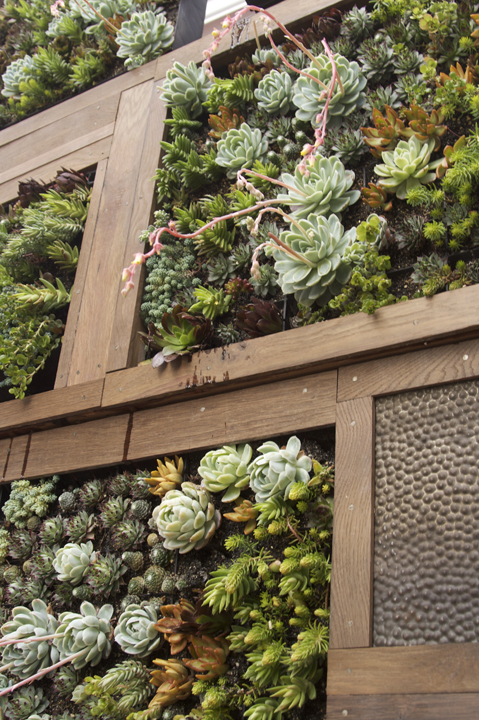
Peggy: All the big succulent growers are down south right, like 700 varieties or whatever. Nick: There are a few growers up north but mostly it's down south. So a lot of my time, especially in the summer, is just supplying the store. And then in the spring through summer I also do a number of plant shows for local succulent and plant societies. Beyond just running the store, I'll load up several thousand dollars of plants and take it Monterey, and there's one in San Juan Bautista, or there's one in San Francisco, so I'll do that for a weekend. I become kind of a nomad during those times. But basically Grow is what I do. Now just recently we got this studio space in October. I have a home space where lately I have been doing a lot of painting. But it's not white walls, it's in my garage and my wife and kids are often upstairs so its really hard to not get distracted there. So it's nice to be able to come here. Peggy: But that's the balance, and we always talk about that, because it's real life. Nick: And my wife's very often busy with work and we have a very young son who's a year and a half and another son who's four years and a half. The four and a half year old, I just dropped off at school, but that's only 'til three. Even on the best weeks where I have five days where I don't have to be at Grow, you'd think I'd be able to put in about 100 hours in the studio. And that's what I want to do, but It doesn’t always work that way, You know the deal. It's real life with kids. So we got this space and it's nice to just hang work on the wall and see it and also have space to do installations. Right now it's mostly paintings, and you can see right here I've been doing these constructions that hopefully will be included in the show. Peggy: Talk about the show then. Nick: So my friend Jamie Bruzenak and I, and my wife Kara, were out to dinner one night and she introduced us to my friend, now my studio mate, Adrienne Allebe, whom we'd met a couple of times, but this was more of a direct thing and we all spent the evening together. And Adrienne said something about SLOMA's application process for having a show. We didn't really know each other at the time but we all admired what each other did artistically and so in a matter of 3 days, Adrienne put together this proposal. We submitted it and it took a long time and we finally got it. They book it out for like three years at a time and we got in. Our show is like 2.7 years from the time we got notified. Which at the time felt like it was so, so far away. But I really feel fortunate that I've had the time to be able to do that, because the work has definitely evolved a lot. Everyone else's work has evolved in a really nice way. I think it will be fun. It's the three of us. Michael: So it's you, Adrienne and who else? Nick: Jamie Bruzenak. Jamie lives in Los Osos too. Nick: So yeah. It will be in the Gray Wing at SLOMA and it'll be in October. Michael: Nice. This October? Nick: Yeah, it's soon. Peggy: So you paint and you do three dimensional? 
Nick: More and more I've been getting into the paintings. And I've been doing this work that is sort of based on this idea of the "relic." So I've been doing a lot of found object sculptures. Some of them contain single units and then others I've been building constructions like this and they'll have relics within them. I also have been getting into paintings about sort of disguising things or hiding things or protecting things. So I think some of the sculptural stuff will evolve a little bit whereas they used to be just primarily these big sort of constructions with paintings included in them, and objects. Now I think I'm going to start pulling some fabrics and things into it to help it sort of connect with this painting work I've been doing. I get on little kicks and for the first three months all I was doing in here was sculptural stuff. There were no paintings in here. I was coming in here and working in the studio a lot and I sort of got burnt on painting. I was making a lot of work but none of it I was really satisfied with. So a lot of these paintings that you see now are paint-overs of the paintings that I was making a few months ago. I sort of like the idea a lot because a lot of these paintings are covering things up, so the fact that these paintings covered up the older ones really fit into the concept. I really like that. So we'll see how it all goes. I'm excited to have a big gallery space at the Gray Wing at SLOMA. Because previously up until that, around here the only space I've shown is Deer Run where I had a body of work. Michael: So tell us about a little bit Deer Run because you're pretty involved in that. Nick: Yes basically Deer Run is Leslie's gig. Michael: Leslie?  Nick: Leslie Clarke Gray is the owner of Deer Run. It was her brain child when she moved here. She describes it as "art and objects of the 20th and 21st centuries." It is basically "whatever the hell I want, I'm going to put in here." I really love that and you know, it's objects of interest. It's like what I try to explain to artists that I try to lure into show in that space it's like "it's really hard to define." And her website has some images, but it's hard to explain what it really is. A lot of people walk in there and glaze over because it's hard connect cause it doesn't have a . . .I mean my store is similar to that but when they walk they know it’s a nursery. For Deer Run, it's not a nursery, or a garden shop or a clothing store, it's like—what is this? Michael: I think what you are saying is that it is not a place that fits pre-existing expectations. You have to walk in the door ready to engage it as something new to you.
Nick: Which is what's interesting to me of course. So I'll describe it like—there's an African mask next to a 50s figurine of a deer next to some old clippers, next to a driftwood sculpture—and it's really crazy. But how I got involved in that was that we became friends and she said, "Let's show some of your artwork." When I moved in here I wasn't making a lot of work because I was completely enthralled in Grow and I had stopped making work. And I was also frankly a little discouraged by the opportunities to show work around here. I just didn't really feel like the work I was making fit into any of the gallery spaces here, so I stopped making work for about 3 years, and I sort of looked at it like Grow was my art. And I still look at Grow like that. I'd be putting together things or making sculptures out of plants, so when she approached me to do the show I really had nothing but older work. And we put it up and we sold a lot of it and that was really the thing that got me excited about making work again.
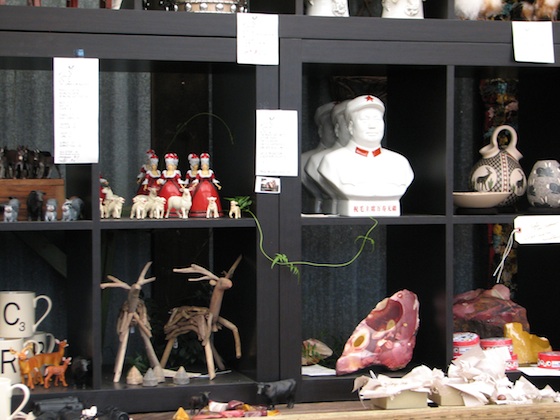 Because it was sort of like my work is valid here and of course when you are selling work that's exciting and fun. So that got me rolling and I sort of underestimated not making work and how it would affect not making work. I just now feel like I'm really getting a full head of steam behind me and making things. Not that I'm not proud of what I've made in the previous years, but I really feel like I'm focused and it's all sort of coming together. Ultimately I thought, "Well I can't have a show here every month," and she has a great wall, and I had an interest in seeing in person a lot of work that I've seen online of friend's or connections I've made in the past so I just started to curate that space and I mean curate but with a lowercase "c." It's just a little space and we have some shows. I think what we are doing there is interesting. It's really not about local art, which is what a lot of San Luis Obispo County is about, but it's not anti-local, I mean we have Peg Grady right now. But it's really about having a space where we can show work that pushes a little bit beyond what you see a lot around here.
Because it was sort of like my work is valid here and of course when you are selling work that's exciting and fun. So that got me rolling and I sort of underestimated not making work and how it would affect not making work. I just now feel like I'm really getting a full head of steam behind me and making things. Not that I'm not proud of what I've made in the previous years, but I really feel like I'm focused and it's all sort of coming together. Ultimately I thought, "Well I can't have a show here every month," and she has a great wall, and I had an interest in seeing in person a lot of work that I've seen online of friend's or connections I've made in the past so I just started to curate that space and I mean curate but with a lowercase "c." It's just a little space and we have some shows. I think what we are doing there is interesting. It's really not about local art, which is what a lot of San Luis Obispo County is about, but it's not anti-local, I mean we have Peg Grady right now. But it's really about having a space where we can show work that pushes a little bit beyond what you see a lot around here. Peggy: You don't have to mince words, I mean that's why we are happy that the three of you are doing the show at the Gray Wing at SLOMA... Michael: Okay we are in a beautiful, beautiful location where plein air painters love to come out and paint and so there's a lot of landscape painting here and I don't know how many paintings I've seen of Morro Rock, I mean they are everywhere. Nick: And some of them are good! Michael: Yes. Nick: But if I see another painting of Morro Rock my head is going to explode. It's just not what I am interested in and I have no real connection to those things. I mean I can appreciate art of just about any dimension but it is so saturated here with a sort of naturalist vibe, so who needs another gallery showing that kind of work? Michael: And I'm going to throw another slant to that because we've been talking to a lot of artists since we've been doing Outside the Lines and I'm involved with the sculpture group at SLOMA and what I've found is that there are all kinds of artists in this county that just find it really hard to show. Nick: I would agree. And why do you think that is? Michael: For one there aren't enough places to show. Nick: And the reason there aren't places to show is because people don't buy art in San Luis Obispo County. I mean that to me is the real issue here. And I try and I'm not buying big pieces of art but I have a pretty substantial collection because I preach that whole notion. Michael: But see, this is such an amazing place to live that artists want to live here and so artists figure out a way to live here. But if artists depend on artists to buy their art. . . Nick: We're sunk. Michael: It's a diminishing return and this is a small county—.a small, rural population county. So a high percentage of the population are artists—.probably higher than normal. So we've got the environment to make the art but we don't have the environment to sell the art. That's the big challenge—it's kind of a wealth of riches mixed with a certain kind of poverty—it's an odd thing. Nick: Yes it is an odd thing. But I'm sure glad that I live here and I feel fortunate to be here but that part of is—I don't dwell on it too much, I mean I don't worry much about selling work, and thankfully I'm not relying on that—I don't think many of us are. We all have to find something else to do, you know, but yeah. It's a good place to live, and a nice place to make work, isn't it? Don't tell anybody else though. Edit that out okay? Michael: I think the cat's already out of the bag. Peggy: That was the whole thing with Phantom—how many hundred artists showed up at the show? We had about 200 artists at the second show. Michael: You know the Phantom Project? Nick: Yeah, uh-hum. Peggy: Well with over 400 and something pieces of artworks being showed... Nick: How did you sell? Did people sell some work? Michael: Yeah we sold just over $11,000 in the second show. Nick: Fantastic! 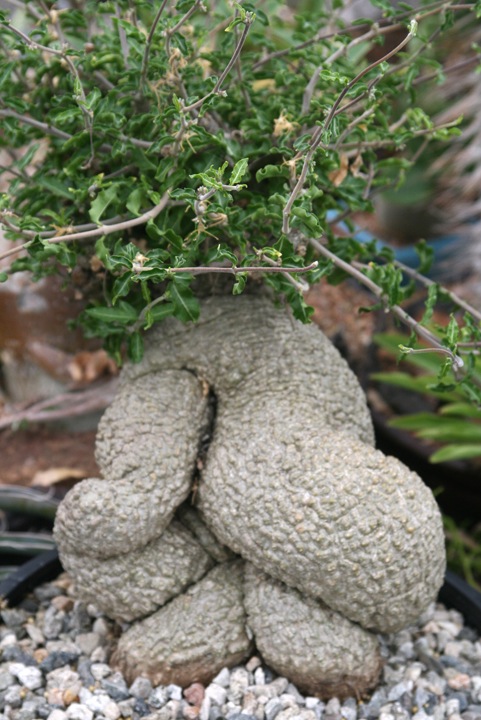
Michael: In a month! Three days a week. We were opened three days a week and we sold $11,000 in a month. Nick: So what does that say? Do you think that it was just because it was a big show? Peggy: It was location too. Michael: Yeah, it was partly the location too because it was right on the park and right next to the Studios on the Park. There was a wine festival and the Art-in-the-Park event during the month that we were there. We had over 1,000 people coming through the day of Art-in-the-Park. I've forgotten the total number of people we had but it was thousands and thousands of people during the month. Peggy: It was almost 5,000 people that came there. Michael: So that particular location was kind of interesting because it's the spot where people get off the freeway, have lunch, then get back on the freeway. But they wander around a little bit and stretch their legs while they are on their little driving break. And I've talked to several people there at Studios on the Park and they say people stop for lunch and buy a painting. And so that's not local buyers. Nick: Yeah. Michael: There are very few spots in the county where you get that kind of action. Nick: Thankfully Cambria does get a lot of that kind of action too—not so much as the rest stop from the freeway, but there are people on vacation for the weekend, there are a lot of people who are trying to a lot of what we all got out of by moving here, which is the hustle and bustle. So they come here and they stay on Moonstone Beach and go to Cambria Shores Inn. Then they come down to Deer Run, sometimes several times, so its definitely good, and we sell lots of paintings. We sold another one yesterday. Peggy: Good. But when Deer Run was in it's earlier spot we would go by and peek in the window and think, "What is it?" Michael: And it took us years to figure out what it actually was because usually when we would walk by it was closed. Peggy: Yeah, they had kind of funny hours. Nick: Yeah, it's definitely the kind of space that I am drawn to but it's not for everybody. And I think for Leslie, one of the hardest things is dealing with, you know the silly questions. When it's really your baby you want everybody to "get it." And sometimes it's not that easy, you've got to just take it when people don't get it and so I think that's the biggest challenge, to not get bogged down in the folks that don't get it and really embrace the folks that do, because if you are going into a thing that is as specialized as that, then you just have to accept your role, cultivate your crowd, and just do it - you know? Michael: Well you know there isn't probably any venue that works for everybody and I think that's a lesson that everybody needs to learn. Artists of any kind need to learn the fact that some people don't like it, some people don't get it, some people never buy it—it doesn't matter. 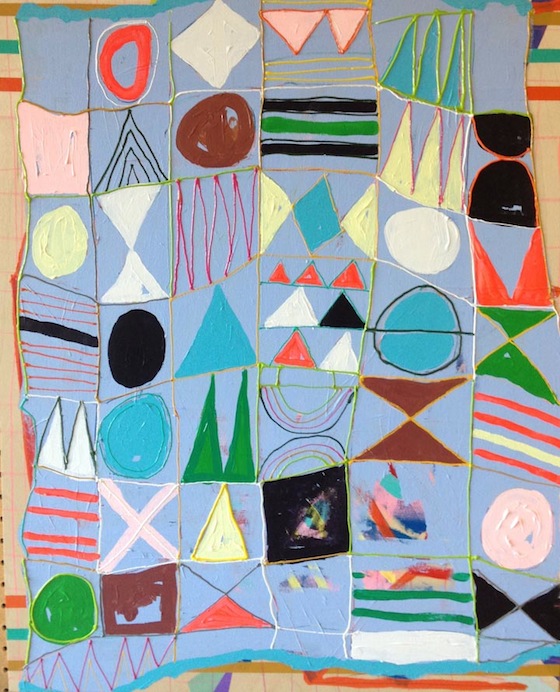
Nick: On that note I had some work at the Museum in the lobby for a month a while ago, maybe a year ago. It was right across from the reception desk. During that time they asked me to have some work in there. So I put together, basically it was like a little install but it had like these little blocks that I painted and it was really exactly as I wanted it and it was fun. You know, when I picked up the work Wendy said, "you know Nick we would get questions. . ." and I said, "So how did it go? What sort of response did you get?" I mean, we didn't sell anything. Because it's different from what a lot of times is at the Museum. And she said a lot of people would come by and say, "How old is this artist? Is this a children's exhibit?" And all you can do is laugh about that. I could accept that, and it's okay if people don't get it and or don't understand it. Peggy: Do either of your kids show signs of being artistic? Nick: Well you know my youngest is still picking up things and throwing them at his brother but my older son Cruz is definitely interested. Especially in the last six months or so, I'll be at home painting and my wife comes home with the kids and they'll jump out and first thing he wants to do, even if it is for twenty minutes, is to make a couple of paintings like Dad, which is cool. You never want to push it on kids. I guess we all sort of made paintings. The thing I always found really interesting was when you're young you make paintings at school, you make hand turkeys and then for some reason at some point, a lot of people just stop making work. I wonder why that is? Michael: it is an interesting question. I've always assumed that people that go on to make art are usually people that got encouraged as kids—I don't know. Nick: I was never encouraged to do that. In high school I was good at drawing people and drawing faces and I guess I was encouraged once I started doing it, but I don't remember like being really encouraged as a youngster. But I think maybe that's because my parents weren't artists. I would like to see a lot of young kids making art. I always like to foster that, and sometimes it's a kid that's showing interest and nerving out on the science of a plant. I mean you wouldn't believe we have 10 year old kids who have collections of succulents and that to me is just really fun. I guess that doesn't mean they're going to be nurserymen when they get older, but you know. Peggy: But they'll still really appreciate it. In fact my friend Leslie Hannon sent me a bunch of cuttings, and I planted them and so I went to the library and went and got a book on succulents by Debra Baldwin and she mentions you and has some of your images. It's a nice book. Nick: Yeah, it is a nice book isn't it? And she's a very nice woman. Peggy: I don't have a green thumb so that's why succulents work for me. Nick: Welcome to the rest of your life. You're never going to get off them. Peggy: They're addicting. Nick: They were for me. Of course a lot of things are for me, you know. I collect a lot of things. Peggy: But not as much pottery now?
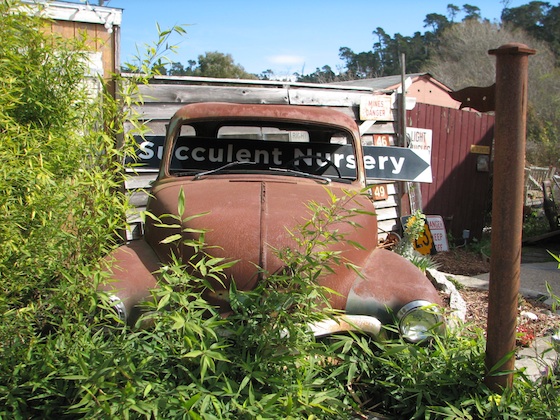
Nick: No, but the thing that's so cool about having a store like I have, for a collector like me, we always joke that the only thing keeping people from calling me a hoarder is a business license. That's what my buddy Michael always says. Which of course is hilarious and very true because I am a collector of things. I love things. But what having a store does is it validates me buying whatever the hell I want to buy, within reason. I mean I don't buy old trucks although I guess I could do that if I parked them there at the store. Peggy: And if you planted succulents on them! Nick: Yes put succulents on them. But I get to buy things, I get to buy rocks and minerals and all of these objects of interest that I just love and then I live with them for a time. Sometimes longer than I want to and then someone buys them and they go away and then I have money to go buy something else new. So it's really fabulous in that way. I don't really have to have that much stuff around the house now. My collection of plants is up at a greenhouse, we have a few things around the house. I have collections of things that are inside, of course my art collection is at home. But I'm a collector of collections. I collect everything. I have a lot of collections. I would be embarrassed to count how many collections I have to be honest. Peggy: You don't have to reveal that. Nick: Oh gosh, books, art, rocks, plants, not stamps yet. That's coming. Peggy: When you go to Heilman's you just prowl around and pick up stuff? Nick: We have to keep Heilman's a secret of course. Michael: I'll just say one thing about Heilman's to keep the secret alive. You'll run a good chance of getting a flat tire if you drive through there. I got a flat tire there. Nick: The thing about Heilman's is that it's not for everybody. I mean, it's a junk yard. Michael: Well it's scrap metal. Nick: Right. Right. But there are all kinds of other things there too. He has piles of TVs I'm sure it's about getting the metal out of them. When I go there it's as much for buying things that I can incorporate into Grow as it is finding objects that I can use within my artwork. Grow is like a piece of art to me that I'm constantly fooling with and changing. But Heilman's has been fruitful to me over the years, that's for sure. Sometimes we don't get anything and sometimes I spend way too much money on a bunch of things. 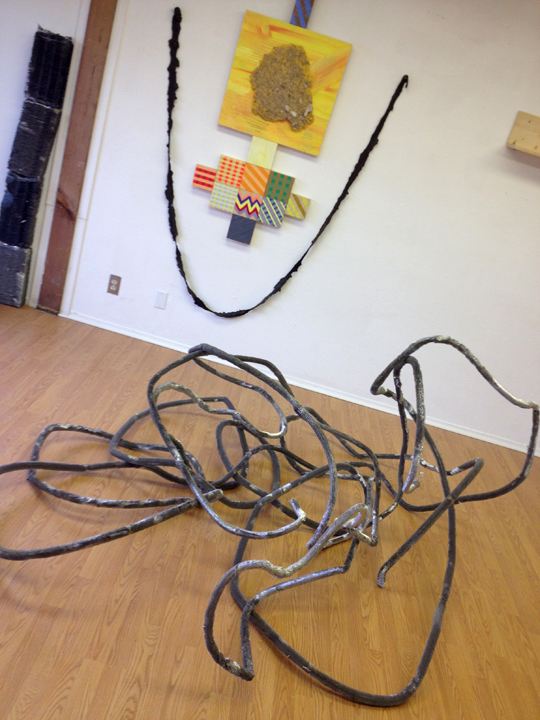
Peggy: What is that? [Points to a pile of what looks like fur covered pipe.] Nick: It's some sort of heating coil. Michael: It's all heat exchange. You have a core tube that liquid flows through and that metal tube has all the little hairy looking metal fibers attached to it and all the metal fur radiates heat into the air. Nick: So I'm really hoping that we'll have some crazy sculpture. It's what I make but I am sort of interested in seeing the reaction that we'll get for some more non-traditional sculptural things. Although I was really pleasantly surprised at the last Slam show. I was really pleasantly surprised by the work that was in that show. Michael: You know we've got another one coming up. May 10 is the entry date. Nick: Maybe I'll have to consider that. I feel like I'm really starting to make things. For a long time I was really more interested in just making things but I really feel like I'm at the point that showing them is of more interest. Michael: Do you have any other places that you're showing right now? Nick: Not right now. I'm in this show on March 2 at Studios on the Park. It's a group show that was put together by Neal Breton. It's called the Young Savages. Hell I just feel fortunate that they're calling me young. It's mostly artists that are much younger than me even, in their 20's I think. Although maybe not, Neal is my age. The hard part about a lot of spaces having young artists around here that are making work and having them show that's something the Museum could work on a little bit too. It's hard to get more young artists. Michael: It's one of my pet obsessions is to figure this out. I'm 61 and it seems to me like most of the artists I know are my age and I know that's not true. Nick: No it's not true. Michael: It's true that most of the artists I know are my age. But I know that's not the bulk of the artists. And I think I know those people because I've been involved in the Museum and a little bit with Arts Obispo and there is a huge contingent of retired people who came here to make art, so there are a lot of us but it is not a representative slice of the art community. Nick: No, I would agree. Michael: And I'm very interested in how to broaden the connections. I'd really like to see more mixing. Nick: I think it would be fabulous. But I think a lot of it too is when you're a young artist - the hard part about being a working artist is that you have to be professional. And I think for a lot of really young artists, to be focused enough to really take it like it needs to be taken is the biggest challenge. Not that it can't happen. I mean I certainly feel like I can do it and I know a lot of people that can take that on. But I don't know why there isn't more. Also I think it's the lack of galleries around here. Because when you're in a big city when you're in Los Angeles or San Francisco there are a lot of galleries that cater to the younger crowd and emerging artists, whereas, how many galleries are here? You can count them on your hands. There's the Museum, there's a couple in Paso. 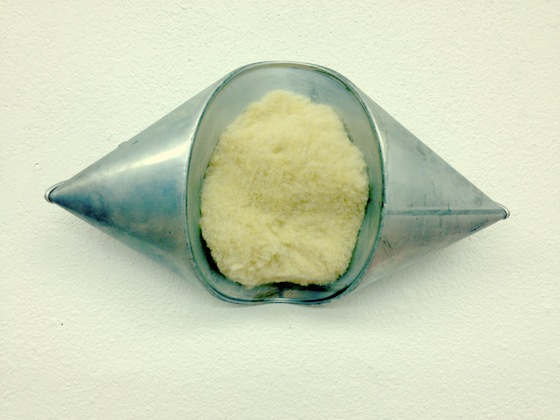
Michael: There's three in Paso. There's Pierce Modern and Vale Fine Arts and Studios on the Park. Pierce Modern shows mostly out of town and Vales shows some local. But they're not focused on local. Nick: They're trying to hit a higher market? Michael: Yes and they're not focused on local. Personally I think the sign out front that says "local art" is a serious mistake. I don't think that art should be shown because it's local. It should be shown because it's good. Nick: Well I would agree with that, of course. That's part of the reason it's so difficult, because a lot of people are really sensitive about that, and a lot of people's artistic identity is based on that premise of "I make local work." But to me it doesn't really matter, which is why we've shown a few local artists. We had a show of local younger artists. The show was called "Artists We Like." And we had "Artists We Like 2" six months later, which was out of a bunch of artists from all over the country and real artists that are showing in real galleries selling real work. And that's the whole gig. That's what I want at Deer Run, just like Leslie's whole mantra. I want it to be just people that we like. I love Peg Grady's stuff. But there are a lot of people who make work here in the county too that's not really appropriate to show at Deer Run because there's small wall space and it's really object heavy. Which is why I like Peg's things. They're sort of objects. But I never want to be handcuffed to the idea of the local. I do support local though. Peggy: How did you find the artists for the "Artists We Like" shows? 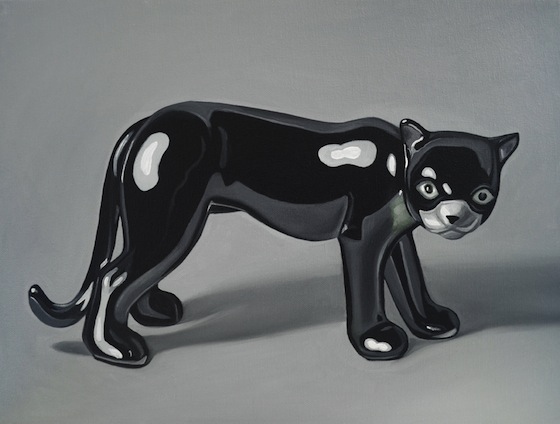
Nick: I look a lot at art online. I have galleries that I like to follow. And it was a lot of old friends from the old days curating in San Diego at the ReUp Gallery. And it was new people who had come to light and I just emailed them. And the show that's coming up right after Peg's is a young artist. Her name is Cassie Marie Edwards and she does these fabulous paintings. She's from South Dakota, born and raised in Wisconsin. I saw her work on Facebook of all places, just through a friend of mine. I contacted her and she's sending out 16 paintings. They also really fit with Deer Run. She does several bodies of work but this body of work are all paintings of these figurines. They're like beautifully painted, very realistic, but they're a figurine of a little 50's white porcelain thing with big exaggerated features like the little Japanese figurines. But it's all painted all glossy and it looks like a figurine but it's not real. She also does some landscape paintings, they're landscape-like. She'll do the clouds and she'll take a crumpled piece of paper. She paints so there will be a piece of crumpled paper that's painted totally realistically as a cloud and then she'll paint another piece of paper that's folded that looks like rain and it's raining in sheets. So she does all these neat things. Peggy: When is that show? Nick: The opening is the end of March, like March 20 and it'll go 6 or 8 weeks. The other thing about Deer Run is that we do it about every couple months, every 6 weeks or so we turn it over. It's a pretty loose thing. Peggy: So how do you manage all of this? You talked about theoretically having about five days when you're not at Grow. Nick: Putting on these shows doesn't really take that much. It's some emails in the evening. Just corresponding. I have a vision for Deer Run but it's not like we have a mission statement. We can go two months without having art work and Leslie can fill the space. That's why it works. Because I don't have to treat it like a real job. I mean, I'm serious about it. We have Peg's show, we have Cassie's show, and we have a couple of other artists that we've talked to but basically we're always just running a couple months ahead. Peggy: So you have the Grow space in the back of the garden Shed complex. And Deer Run has its space. So then the Courtyard is the Garden Shed's space? It's a nice spot. Nick: It is a nice spot. We hope to do more things like have some events there. Like we had Jody Mulgrew singing there. That was sort of a last minute thing but I'm really happy that we did it. He's got such a nice presence. Peggy: It was just cold but when the weather gets good it'll be really nice. Nick: We want to do more things like that inside the Courtyard. We had sort of a grand opening, kind of a loose party. It was fun, it was well attended we had beer of course, we had a keg. Everybody showed up. So we hope to do more stuff like that. The other thing that we don't do at Deer Run is we have some opening events when the artists are local but when they're not locals we usually have an opening date but not a big opening reception. Cassie's from South Dakota so it's kind of hard. I guess if we were a real gallery we'd really push it to have people come out. But we just sort of rely on people coming through and learning about it on line or in the newspaper. If we did more local artists we'd probably have more receptions. Peggy: You have nice wine too. I thought, this is not cheap stuff. This is good. Nick: Yeah the wine that we had at Peg's was real. It's Hearst Ranch wines. Have you had it before? I enjoy it. I sort of didn't think it could be that good, you know. Not because Hearst is a bad name, but it just popped up recently, so could it be good? Peggy: I think he hand picked who his winemaker is. I don't think they have grapes yet so they're working with someone, I can't remember who he's working with. Nick: Wine, let's talk about wine for awhile. That's another thing I collect. I love wine. Mostly reds but all kinds. Peggy: What are your favorites? 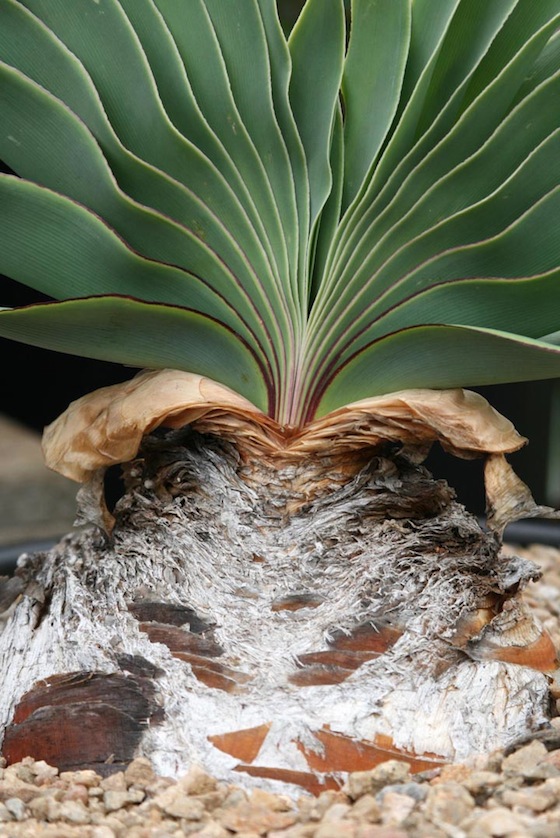
Nick: What are my favorite wineries? I just signed up for Hearst's club. What I like about them is they're pretty approachable pricewise, they're good drinkable wines, you can give a bottle of just about any of their wines to just about anyone. I'm in a few clubs but if I join a club that's how I want it to be. I don't want it to be that they have one or two fabulous wines. I want it to be like I can literally give this to somebody and they're going to be happy about it. The other one I really love is in Edna Valley called Chamisal. It used to be Domaine Alfred I think and it's out on Orcutt Road near Wolff Vineyards. I'm in another one off of Vineyard Drive called Linne Calodo. Peggy: That's good but pricey. Nick: I'm also in another one that's called Torin out of Paso too. I've never actually been to their winery but my buddy, Jacob and I split a membership like at Linne Calodo. I like to have a diverse collection of wine but I don't need a $500 bill every three months or whatever. I also have Saucelito Canyon in Edna. There's so much good wine. Peggy: That's also why we're in the right area. Nick: The other one I really like is Brian Benson. I guess we've met just in the tasting room when he used to be at Dark Star but now I heard he's out at Denner. His wines are pretty big. I like them a lot. They're delicious. There's so much good wine. I try not to have wine blinders on and go to the same place over and over again, but it's hard. I've got to get to Chamisal because they give me 35% off on my birthday month and I've just got a few days left. Michael: I've got a big question but it's kind of our wrap up question so I want to be sure there's nothing else we need to cover before we get there. Nick: What I was going to ask is, do you think other galleries could survive here? Michael: Oh yeah. Well. Nick: Because I really want to have a gallery here, that's what I really want to do. What I really would like is for my business to make it to where it's not important that I sell 100 paintings to pay the bills. I want to take the idea of Deer Run and this is a total pipe dream but I'd love to have a space where I can show work from out of town and local, work that I like and make it be sort of profitable. The problem is selling work. You can't just eat it every time or be buying the work yourself. Michael: Okay you're a multimedia person here, you paint, you do sculpture, you do a lot of constructions and installation type things. Now of course installation gets into a different issue because that's harder to sell anyway. Let's just set the installations aside for a second and say tradition sculpture and painting. Well if you don't sell a lot of it and if you're productive then you need a warehouse. Nick: I need a warehouse. Literally I need one. I mean my garage . . . Michael: And I think it's actually worse for sculptors than for painting because you can make a rack against the wall and store a year's worth of paintings in that rack. Well that rack wouldn't take a year's worth of sculpture. So it's a big challenge. It's an excellent question and I don't know the answer. Nick: What the question really is is where are the art patrons in this county? Where are they? Because people who have money, they buy art, so why aren't they buying art down here? Why would they go down to Los Angeles. I guess they do buy art here. Michael: Well I think they do. We were talking about the galleries we mentioned the three that we know of in Paso Robles, a couple in Atascadero . . . Peggy: I don't know if they sell . . .The Artery and Denise Schrvner's gallery, the Olive Tree. Michael: There's another one but the guy's name is escaping me. Then Cambria has all these gift shop galleries. There's really only The Vault and she sells. She even sells a lot of local artists. Peggy: Everybody says she sells. She has Lucie Ryan's stuff, Bob Burridge's paintings. Nick: That's great, I really support that. Out-of-towners? Michael: Yes. She's had that place going for I don't know how long. And she's one of the most consistent art sellers in the county. 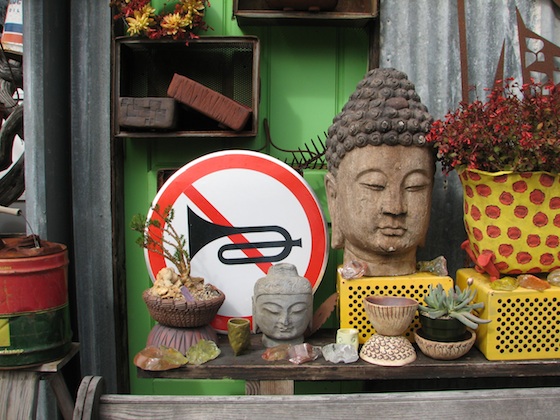
Peggy: And the Artifacts Gallery in Cambria, not necessarily my taste but they have repeat customers and they represent certain artists, so if a new piece comes in from a particular artist they call their buyers. Michael: And I don't know about South County. Nick: The space that was really fabulous that I connected with the most was the Compact Gallery in San Luis Obispo. I mean he just didn't give a shit. It was about the art, not about selling work. Peggy: It was a great space. Michael we went to a show there. On North Higuera or Monterey Street. The block building in the parking lot. Michael: You mean in the old car dealer, is it still there? Nick: No. He's gone. Michael: Then there's Steynberg but he struggles to sell enough, so he has to sell coffee. Nick: That's the thing with Artifacts and The Vault. They're galleries because they have a bunch of art work in them but I guess my vision would be that it's a rotating space and it's not the same work sitting there. Michael: So what you're talking about is a place where you rotate shows through. Nick: Absolutely, I mean I have a gallery at Grow where we sell lots of some local potters and other potters from all over. And more and more it's vessels for plants. So it's hard to think of planters as a work of art and I'm really trying to get to the point where most of the pottery is very distinct. But I'm talking about a real gallery like the ones in New York City. Not even necessarily that but just one where it's a rotating thing, not really heavy where every 3 weeks we have a new show. But a nice big beautiful place that's not a coffeeshop. Peggy: Not a gift shop. Michael: That's the other thing in this county there a lot of places that call themselves art galleries that are really gift shops. There are several of those. So you're right. Nick: So there's the three in Paso, Steynberg. The Vault. Then like Patricia Griffin in Cambria but she only sells her own work, which is cool. But I guess I don't feel like the Vault brings something of interest to me to this county. Michael: The turnover is based on sales. That's a standard gallery model you see all over. Nick: Yeah, I'm not interested in that. Anyway, it's a pipe dream. Michael: Probably the answer to that is how to market it and how to publicize it. And you have to publicize it beyond the neighborhood and you need to create the buzz in LA and San Francisco about your place here. And I'm very intrigued by that question. Peggy: The beauty about Phantom was that you didn't have to pay the rent for that month. 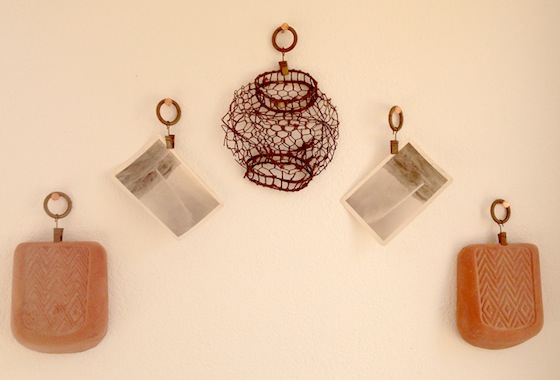
Nick: You know, before the Phantom thing happened I was talking to my buddy Ryan Williams who now lives in San Francisco. And he and I were talking a lot about that idea, and also Leslie from Deer Run talked about the idea of the pop up gallery. I was really intrigued by that especially if you don't have to pay the rent. I wasn't so concerned about the local at that point, I was just thinking it's tough to have somebody ship a bunch of work out from Chicago or somewhere and not have a solid space or one that might get leased next week. Michael: So our focus for the Phantom Shows is local though we had one person ship some work from Arizona. They just got wind of it and said can I do it. And I said sure. But that whole paradigm is pretty cool because we sold $11,000 worth of work in a month and of course the rent on that building would have been $22,000 a month. I know because they had a "For Rent" sign up. Peggy: But they gave it to us for free. And now Artisan Restaurant is going into the corner section so that's a good thing. Michael: It was an excellent space. 13,000 square feet. Excellent lighting, clear floor space. And now it's all torn up for different stores. I think in a community like this you need location. You need a place that gets heavy foot traffic, preferably foot traffic that's not just your neighborhood people so that corner in Paso was really good. Higuera is also a good place to put a pop up show. Nick: So who's manning it, just artists? Michael: The way that those worked, everyone who submitted work signed up for a sitting slot. I think we had maybe $300-400 worth of expenses for that show. We charged an entry fee. We sold $11,000 and we had maybe $5000-6000 in entry fees, and prizes. Nick: So what was the cut? Michael: It was 80/20. And half of the 20 went to SLOMA for the first show and for the second show to Studios on the Park because they ran all the sales. When you have 100 different volunteers sitting in the gallery it's kind of hard to manage things like credit cards, you've got to have a way to do it. Somebody suggested just get an iPad and put the app on it, but who's going to leave their iPad there for a month without a consistent staff being responsible for it. Nick: I think Cambria could be it, but I think San Luis Obispo is the place. I think the place that could be nice is the place near Steynberg on the corner. Peggy: The metal building, Michael Taylor Interiors or something. Nick: It's empty but I don't know what's going on, whether it's bank owned or what. Michael: The other thing we've been interested in for years is creating an art district in one of the towns in this county. You've got to get the city behind it. Nick: Well I feel like Paso, around the park, there is a spot. When I think of it I should go there and spend more time in it. Peggy: The other place is SLO, the south end of downtown that has a lot of industrial buildings, like Pacific and Higuera, all those weird little buildings—one was an abandoned PG&E site. Michael: To establish an art district you need a low rent district. Nick: That's the thing. And foot traffic is premium. So then it's not really doable for someone who's just trying to do their art. Michael: But an arts district creates its own foot traffic. People know that there's lots of art there so you can go there and park and then you get your foot traffic. 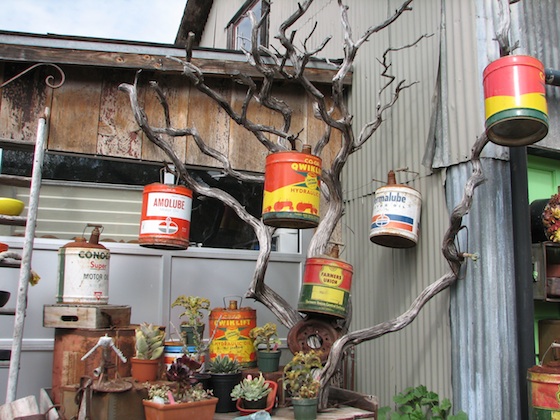
Nick: It's a destination. Michael: But you have to establish your reputation as the art district. But you've got to get your proposal together and pitch it to a city or a county or somebody that can create the zoning. Peggy: Ventura has it written into their City Plan, an actual arts district. Nick: That whole area of South Higuera. When I was looking to move—the building is still there, they're doing a bunch of work, it's the little old service station. I wanted that space. Michael: And there's the barn there. Peggy: Well that's the old PG&E barn there right behind it. Michael: But it needs an overarching umbrella of purpose and intention around it. And the City and some of the big heavy duty developers and property owners have to get behind it. Peggy: I have to check at work because I thought there was some sort of planning going on for that Higuera area. Which is when I asked who owns that metal building? And then the stone building behind it. Nick: Oh that place is magical. Michael: Something like that could just be spectacular. We could just be on the map. Nick: Let's do it. Michael: It takes group of people getting fired up. You know Peggy works with a group of people who know how to move things. They're movers and shakers in this county. So we're kind of scheming. Nick: The other thing you have to do is you have to have people who are going to commit. Peggy: But they could be working studios too. Nick: Or they could be even things like Grow nursery. That's sort of happening in Santa Barbara in that Funk Zone, it's on the beach side near the train station. They're starting to build a couple of nice apartment buildings. It's still sort of funked out and low rent but they're gentrifying it. I saw it happening in San Diego. Michael: This is crucial. It always happens in low rent districts. Artists can't afford high rents. Galleries can't afford high rents. So if you can just take over a neighborhood and create something with it and have the city support it in such a way that they have tax breaks, they have the right zoning and green light permit processes for specific kinds of projects which involve the arts. So if you can get a city to do that and you've got a tangible sort of low rent district to work in then that's when it happens. They're all over the country. Peggy: There are people that help fund those kinds of projects, like ArtSpace. Michael: There's grant money. 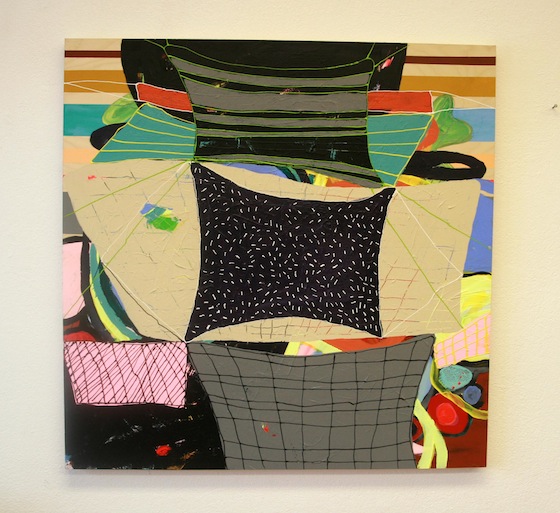
Peggy: They actually do financing. ArtSpace helped financed the WAV in Ventura. It's working and living spaces for artists with ground floor gallery space and cafe. ArtSpace is a notional organization that helps fund these things. And Salz Tannery in Santa Cruz was done that way I think. They basically redeveloped this toxic tannery site. Michael: We have friends in Paducah, Kentucky. Paducah decided they were going to have an arts district. They took this old downtown area and they zoned it and they worked up the permit process and the tax structure and they did a big publicity thing to get artists to move there. Peggy: We know people who moved from Hawaii to Paducah Kentucky. They own a gallery and they live on top. Nick: Really. Peggy: Hannibal, Missouri is another place doing it. Mark Twain's home town right on the Mississippi River. Michael: Look on line. It takes a city with a vision. The city fathers have to get the vision somehow. Peggy: You have to give them the vision. Michael: You have to get your package and your group together. And the City needs to see a core group of people who really want to do it. Nick: Let's do it. Peggy: We have to meet again about this. Okay, last question. Nick: Uh oh. Michael: So you're out here making your creative life and you have definitely carved it out your own way. There are a lot of young people that are trying to figure out what they're going to do with their lives and a lot of people my age that are trying to figure out what they're going to do with the rest of their lives. What would you tell someone who's just thinking about getting into their own path. What do you need to do? What's your advice? Nick: I was lucky enough and sort of dumb enough to believe that I could just do it and so I did it. I didn't have an option. I just made it happen. And I think the hardest thing for people to do is to take the leap to try to do it. I grew up in a house where my mom was all about putting intentions in place, and if you believe that that's what you're going to do then it will happen—which is not always the case, but I think that you have to take that mentality, and you might have to live lean for awhile, and you might have to make some sacrifices. But the reason that I did it was because I wasn't happy the other way. I wasn't going to be happy working a normal job and so I just made it happen. I just decided that's what I was going to do and I did it.So I just think taking a leap of faith is the hardest thing to do. When I did it I think it was a little easier because you could still borrow money from a bank at that point. I still have debt. I took on a lot of things but in the long run I've been able to make a living of a sort doing what I love to do. I don't have a million bucks in the bank, but I wake up when I want to wake up. I work harder now than I've ever worked in my entire life even when I'm just hanging out painting. So you've just got to do it. Just do it. I think you also have to have a plan of course. You have to be mindful. You have to have some structure to do it. But you have to commit wholeheartedly and believe that that's going to work and focus on it everyday. And if it's something that you really love then it's easy to do those things. It's easy to commit because that's what you like to do. So it was easy for me to start a nursery because I love plants and I want to be around plants all the time and when I'm working hard. The hardest days when I'm working are when I'm in a greenhouse and it's a 110 degrees and everybody would just be miserable and you're sweating but you know what, I'm buying plants for a living. I'm on my own trajectory and carving my own path and doing what I want to do and there's a lot to be said about doing that.You've just got to do it. Easy to say, huh? Just do it. Just do it, just like Michael Jordan said, or Nike said, "Just do it!"
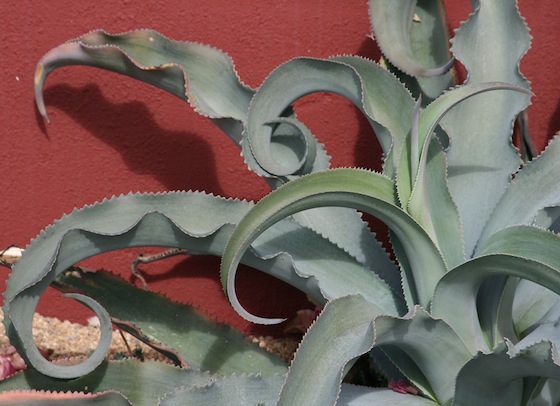
| 








 Because it was sort of like my work is valid here and of course when you are selling work that's exciting and fun. So that got me rolling and I sort of underestimated not making work and how it would affect not making work. I just now feel like I'm really getting a full head of steam behind me and making things. Not that I'm not proud of what I've made in the previous years, but I really feel like I'm focused and it's all sort of coming together. Ultimately I thought, "Well I can't have a show here every month," and she has a great wall, and I had an interest in seeing in person a lot of work that I've seen online of friend's or connections I've made in the past so I just started to curate that space and I mean curate but with a lowercase "c." It's just a little space and we have some shows. I think what we are doing there is interesting. It's really not about local art, which is what a lot of San Luis Obispo County is about, but it's not anti-local, I mean we have Peg Grady right now. But it's really about having a space where we can show work that pushes a little bit beyond what you see a lot around here.
Because it was sort of like my work is valid here and of course when you are selling work that's exciting and fun. So that got me rolling and I sort of underestimated not making work and how it would affect not making work. I just now feel like I'm really getting a full head of steam behind me and making things. Not that I'm not proud of what I've made in the previous years, but I really feel like I'm focused and it's all sort of coming together. Ultimately I thought, "Well I can't have a show here every month," and she has a great wall, and I had an interest in seeing in person a lot of work that I've seen online of friend's or connections I've made in the past so I just started to curate that space and I mean curate but with a lowercase "c." It's just a little space and we have some shows. I think what we are doing there is interesting. It's really not about local art, which is what a lot of San Luis Obispo County is about, but it's not anti-local, I mean we have Peg Grady right now. But it's really about having a space where we can show work that pushes a little bit beyond what you see a lot around here.











